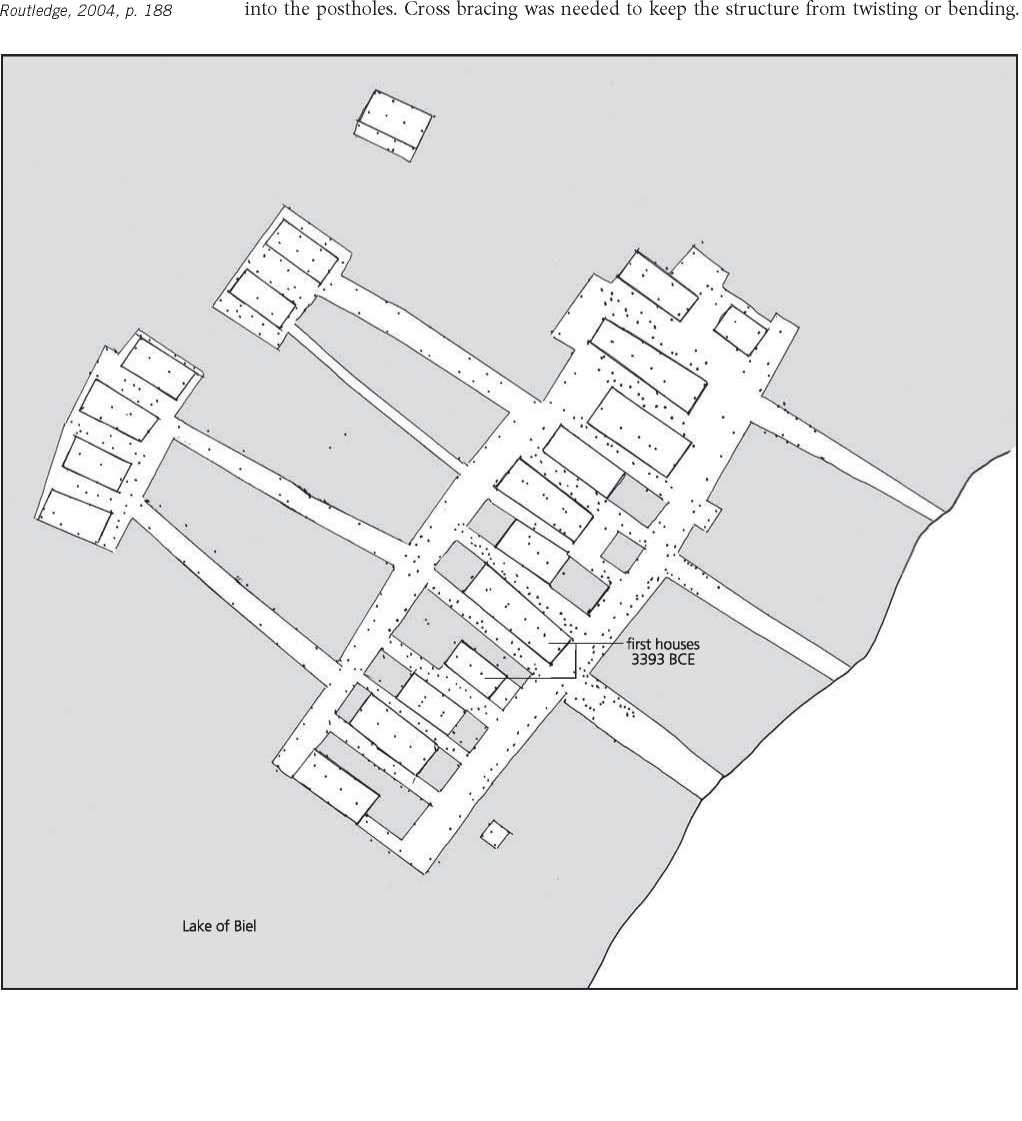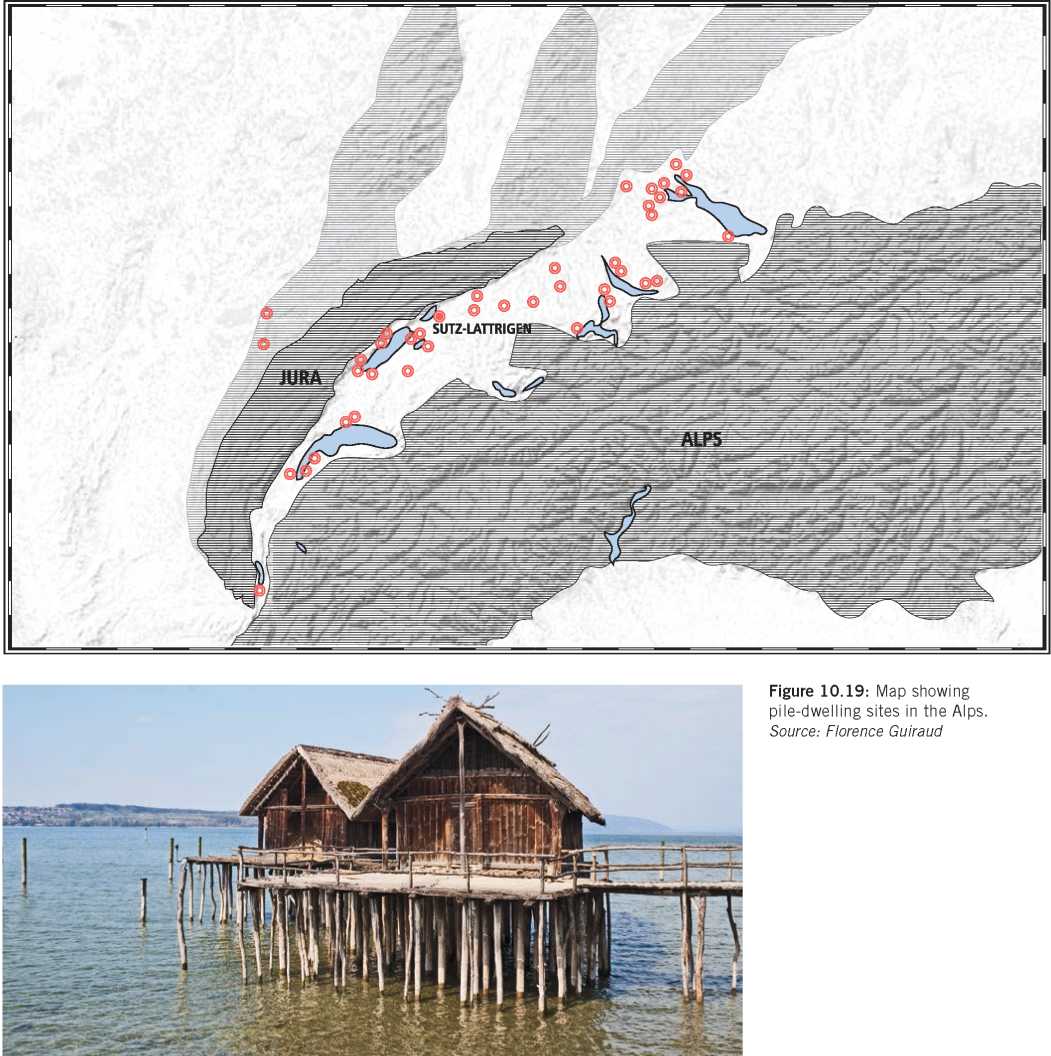Europe, around 4000 bce, was defined by a cultural arc that went from northern and central France in the west, through Germany and down into Romania and east in the Ukraine. Although the people who lived there had slightly difierent ways of making pottery and tools, they shared the tradition of the rectangular farmstead house (some longer, some shorter), as well as a village life (whether small or large), the use of rondel earthworks, and an integrated economic and ritualistic relationship to agriculture, animal-tending, metal, and salt. They were also all mostly valley people, avoiding the flood plains and settling on gradually sloped shores of tributary rivers.
Figure 10.18: Sutz-Lattringen, Switzerland, plan of post and a conjectural reconstruction of the village. Source: Florence Guiraud / Living on the Lake in Prehistoric Europe: 150 Years of Lake-Dwelling Research, edited by Francesco Menot,

While this was happening, a similar but nonetheless distinctly difierent culture was being created along the hundreds of lakes that dotted the geography from Austria all the way west to France and Spain. These shores were excellent for agriculture, the reason being that following the Ice Age, the water lines of the lakes had retreated leaving a mineral-rich substratum of shells and grasses. The soft: soils were, however, not well-suited for houses. The only way to guarantee stability was to use wooden posts driven into the ground and anchored in place by loam pounded
A platform could then be built up with walls made of lightweight wicker and branches. To provide access, the inhabitants laid down logs to produce a sidewalk with the doors facing onto these log roads.22 With time, villagers learned how to construct settlements over the water to preserve as much of the shore as possible. Though the village worked together to make the houses, the various family units probably operated more or less independently. Because of the linear nature of shore agriculture and the need to compress houses together to preserve land, these lake-shore dwellings formed tight, well-defined communities difierent from the more sprawling farmstead-villages in the valleys. 23
Examples of the lake-shore tradition can be found in northern Italy, along the Rhone Valley, across Switzerland and to southern Germany, from Lac de Chalain, France, to Keutschacher See, Austria, and as far south as Lake Ohrid in Macedonia.24 Archaeologists, often working underwater, have begun to analyze the nature of these sites from the postholes. One example is Sutz-Lattring, in Switzerland, one of several pile-dwelling villages along the Lake of Biel. As it grew, it expanded laterally and then a new row of houses began to be built even farther out, all connected by long causeways.
In the fourth millennium, these lake-shore villages defined a corridor that played an important role as mediator in the east-west copper and salt trade between central Europe and France. One village on Lake Constance, Unteruhldingen, has been partially reconstructed (Figures 10.18, 10.19, and 10.20).

Figure 10.20: Pile dwelling, Baden-Wurttemberg, Germany. Source: © Andreas F. Borchert (Http://creativecommons. org/ licenses/by-sa/3.0/de/deed. en)




 World History
World History









